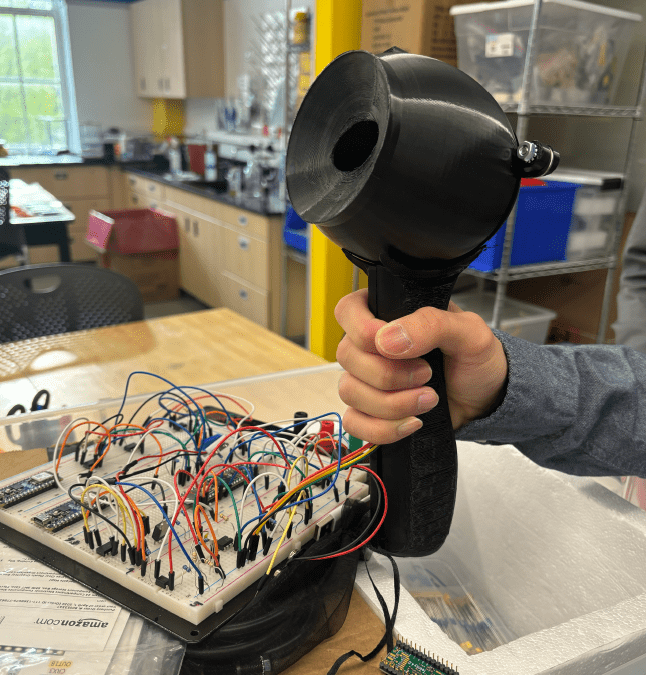An estimated 80 million people around the world suffer from glaucoma, a group of chronic, progressive eye diseases caused by damage to the optic nerve often due to excessive fluid buildup in the eye. Glaucoma is a leading cause of irreversible blindness, especially in low- and middle-income countries where many patients have difficulty accessing professional eye care, including consistent symptom monitoring.
A team of Johns Hopkins biomedical engineering students is working on a device that could be a game-changer for those with limited access to glaucoma care.
OcuSound is an affordable, easy-to-use acoustic tonometer—a device that measures pressure in the eye—that employs sound wave technology and the acoustic properties of the eye to provide non-contact intraocular pressure evaluation at home. The team will present their project at the Whiting School of Engineering’s annual Design Day on May 1.
Ahead of Design Day, the team was awarded first place in the Med Tech and Life Science Ventures category from the Center for Leadership Education’s HopStart 2024; an annual startup competition that challenges Johns Hopkins students to develop a business plan around a novel idea and pitch their plan to industry leaders.
The device works by using a speaker to emit a pulse of sound. The movement of the speaker’s diaphragm, acting as a damping spring, is detected by a photodiode —a light detector. Then, a signal processing algorithm reads the data, correlates the speaker’s damping ratio with the intraocular pressure of the eye, and displays an intuitive result.
“Elevated intraocular pressure is a key metric in glaucoma care because reducing this pressure is the only treatment to prevent further glaucomatous vision loss,” said team leader Valerie Wong.
Monitoring their symptom progression at home would enable patients to share data with their ophthalmologists, facilitating more informed treatment decisions. The team also believes that allowing patients to track their symptoms will not only increase disease awareness but also empower patients to advocate for their health.
The students used iterative prototyping—the process of designing, building, and testing a product in stages—to ensure their device comprised all the elements needed while remaining ergonomically correct for patients.
“By prioritizing functionality and usability alongside innovation, we hope to ensure that our designs not only meet our engineering hardware and software requirements but also satisfy the practical needs of our end-users,” said Wong.
The team also built a lasting bond of friendship through their shared passion for their project. “I am beyond grateful to have the opportunity to lead a team of such driven, motivated, and hardworking individuals. Our design journey together reaffirmed the power of collaboration here at Hopkins,” said Wong.
Members of the OcuSound team also include Benjamin Miller, Hyun Seo (Emily) Lee, Ashish Nalla, Maria Giannakopoulos, Elliott Leow, Shuyi (Nancy) Yan, and Ivan-Alexander Kroumov.



